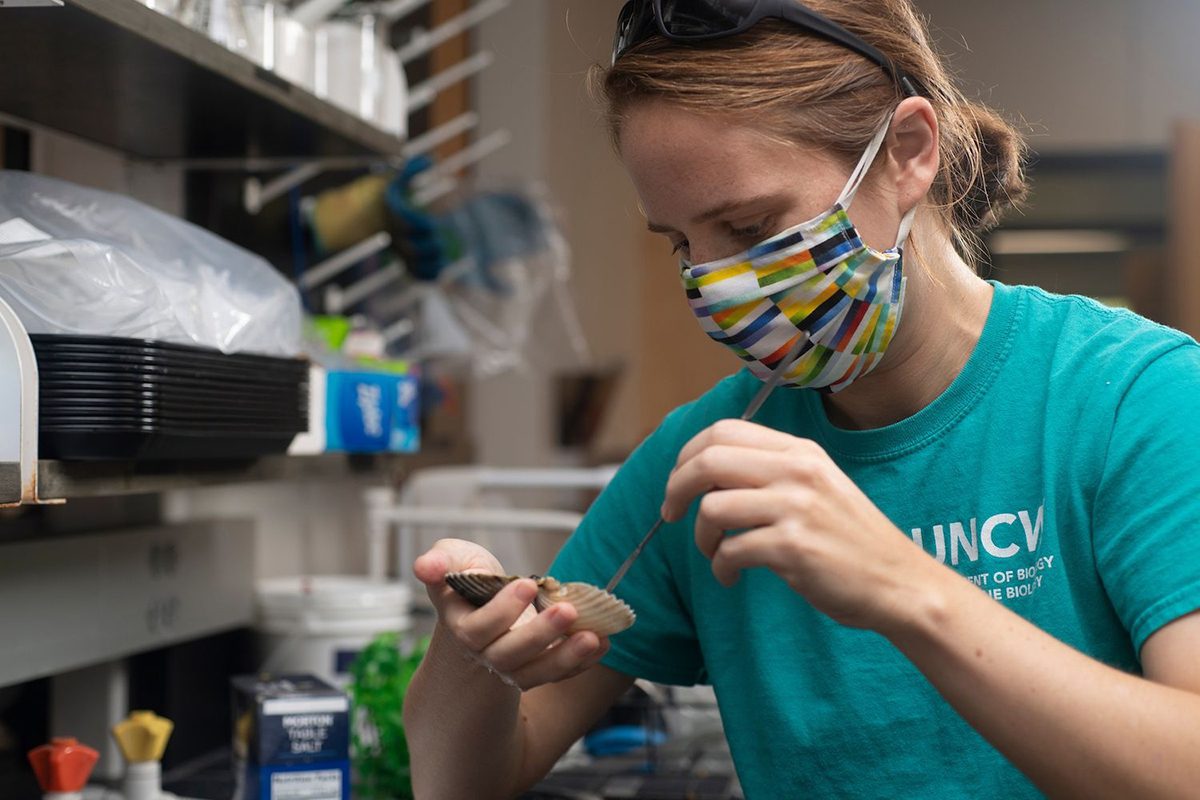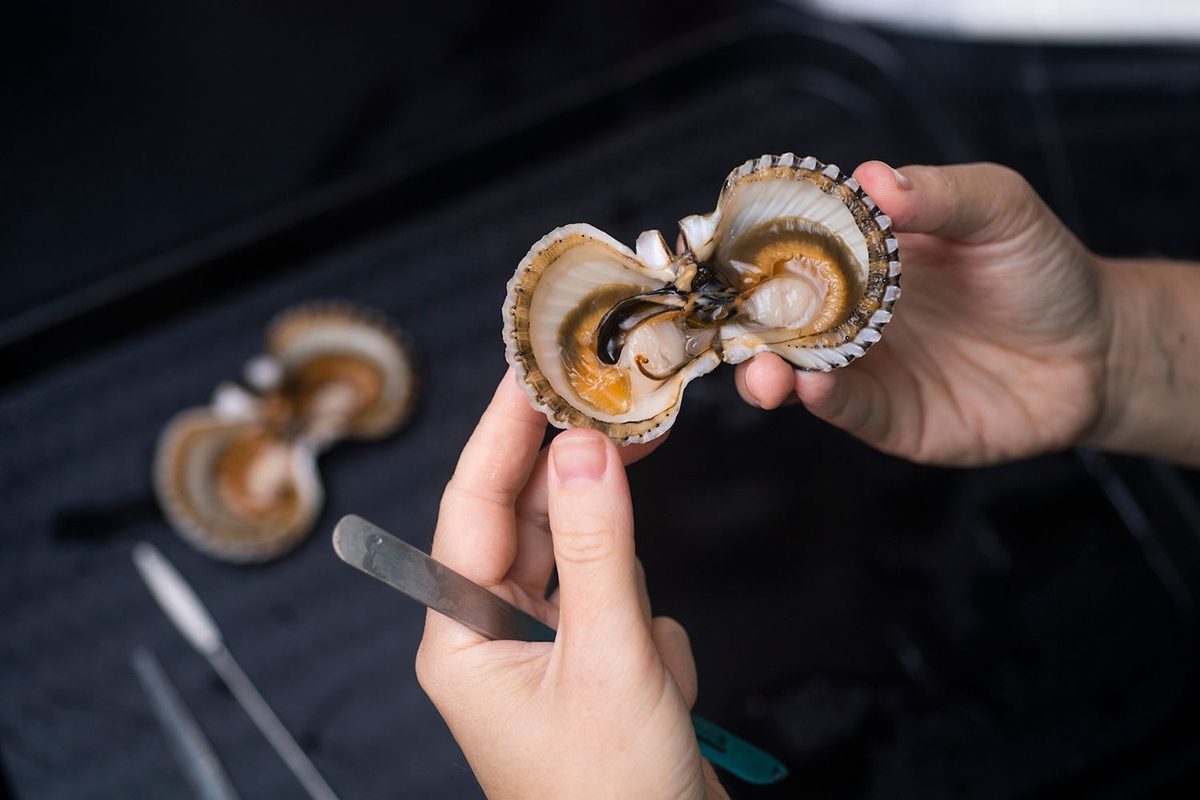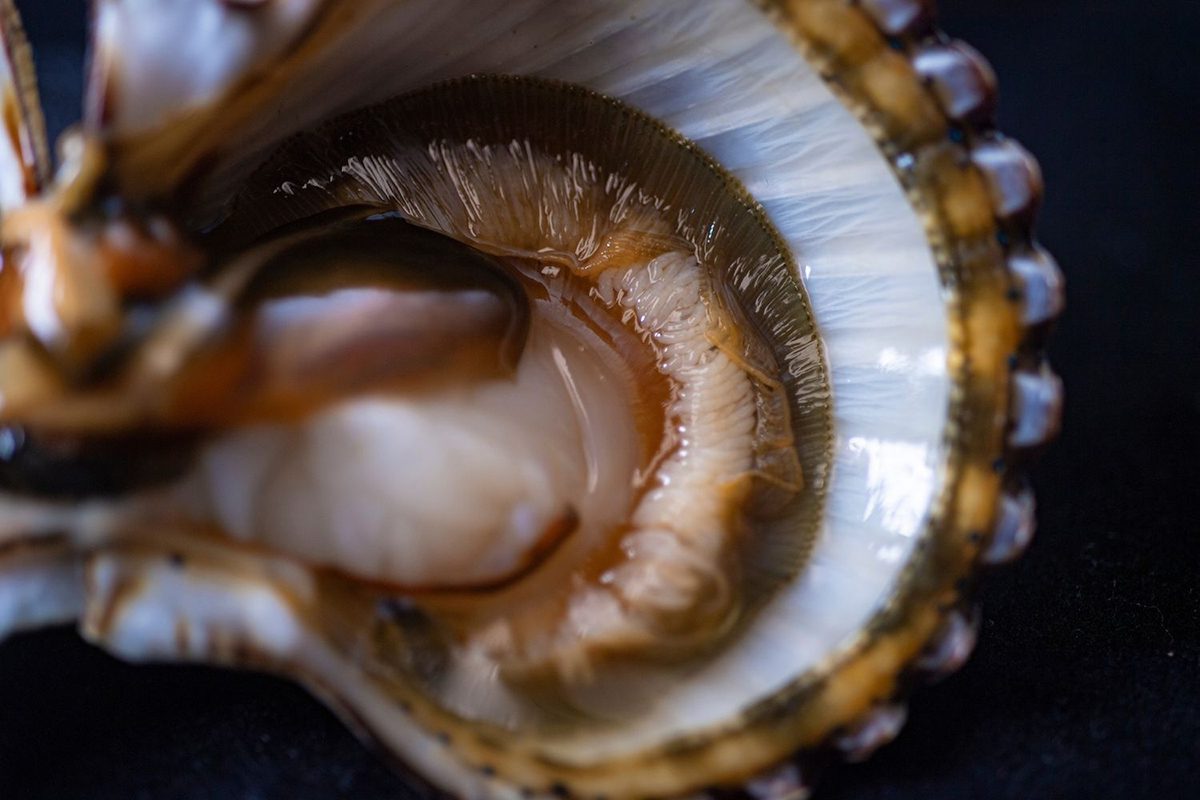
If you love the sweet taste of a fresh North Carolina bay scallop you may want to stop reading this now … but please continue — it’s not all bad news.
Although the likely invasive species of parasite that a team of University of North Carolina Wilmington researchers have identified in bay scallops here in the state is gross, these scallops are not harmful when consumed.
Supporter Spotlight
That’s good news for the bay scallop lover, but it’s bad news for a shellfish that has never fully recovered from a red tide event in the late 1980s, struggles to thrive in polluted waters and dwindling habitat and gets picked off by predators.
“I view this parasite as just one more hit to the scallops,” said Dr. Julia Buck, an assistant professor in UNCW’s Department of Biology and Marine Biology.
After Buck was hired on at the university in 2019, a colleague asked her a question that would set the course for an investigation to determine what type of parasite was infecting some of the bay scallops in North Carolina, where it came from, how prevalent it is in the state’s waters where bay scallops grow, and how it affects scallops.
Dr. Ami Wilbur, director of UNCW’s Shellfish Research Hatchery, first noted the parasite, a squirmy ring of white, tiny, finger-like projections around the flesh of a scallop she was examining in 2012.
It would be several years before she would get the opportunity to meet Buck and ask the most basic of biological questions: What is it?
Supporter Spotlight
Buck promptly determined the parasite was a trematode. Trematodes are a diverse group of organisms in which thousands of species have been known to science for a long time.
But this particular species of trematode was a mystery.

The literature Buck and Wilbur dove into provided no clues. The pair fanned out pictures of infected scallops to fellow scientists up the East Coast (bay scallops are not commonly found from South Carolina south to Florida’s Atlantic Coast) and across the Gulf of Mexico.
Scientists responded with two very different answers. Those in Massachusetts, New York, New Jersey and Virginia had not seen the parasite.
A scientist on Florida’s Gulf coast had and, after researchers did some genetic sampling, they determine the parasites found off Florida’s west coast were the same as those found in North Carolina.
“The bay scallop is an iconic species that people care a lot about,” Buck said. “And yet, even though this parasite is very visible to the naked eye – when you open the scallop you see that it is infected – no one had described the parasite. There was no record of it in the literature whatsoever. That’s really weird. We would have seen it 100 years ago and there would have been a record of it in the literature. The fact that it’s not there tells us that it’s likely an invasive species.”
The team at UNCW conducted DNA sequencing, a laboratory process that allows scientists to learn the exact order of the four building blocks that make up DNA, and compared it to DNA in a database of genetic sequences known as GenBank.
They found the parasite’s closest known relative, a genus that was only recently described, in Australia.
Researchers can’t say with absolute certainly that this species of trematode came from Australia to the U.S.
Buck can only theorize that the parasite infected plankton that hitched a ride on a container ship.
What the team does know is that trematodes have a complex life cycle. They need to infect multiple hosts in order to make it to adulthood.
“We don’t actually know the specific identify of any of those hosts except for the bay scallop at the moment,” Buck said.
What they suspect is that this species of trematode initially latches onto a scallop before it goes on to a small crustacean, like a copepod, a tiny crustacean that is a key component in the marine food chain.
The theory is that infected copepods get eaten by smaller fish and smaller fish get eaten by larger fish. The adult worm develops in the larger fish, where the worm releases eggs, which then infect more bay scallops.
The team research, supported by North Carolina Sea Grant, found that the parasite is now found in most waterways where bay scallops live.
Fellow researcher and former UNCW graduate student Hailea Boggess, who earned her master’s last December, looked at wild scallops in places including Chadwick Bay and Core Sound.
“We basically covered the area in North Carolina where scallops exist because we wanted to know what the prevalence was throughout North Carolina,” Buck said.

Roughly speaking, Boggess found around 20% of the wild scallops she collected to be infected by the parasite.
Researchers found that infections are seasonal and that parasites are likely dropped off by larger host fish, perhaps tarpons, that migrate to North Carolina in the summer then head south back to Florida when the water turns cool.
“We see new infections happening over the wintertime,” Buck said. “This is just every single year we look this is exactly the same pattern we find.”
Ongoing research suggests that the parasite does not try to kill its initial host, but that it does try to steal as much energy as it can to put into its own reproduction.
Trematodes castrate their initial host, which means the parasite strips the scallops they infect of the ability to reproduce.
Buck said the team has also found that the parasites affect the growth of the scallops they infect, perhaps because the parasite lives in a scallop’s gills, making it hard for the scallop, a filter feeder, to eat.
Additional research, including physiological effects the parasite has on scallops, is expected to be published later.
Coastal Review reached out to Adam Tyler, owner and operator of Core Sound Oyster Co. in Smyrna, who recalled the days of his youth when the sound teemed with scallops, a shellfish he calls “sweet as candy.”
“At wintertime at low tide you would go down to the grass flats with a five-gallon bucket and fill it,” with scallops, he said.
The N.C. Division of Marine Fisheries lists the status of the bay scallop fishery as “depleted,” with harvests in recent years decreasing to practically no landings.
“Used to (scalloping) was something you could bank on,” Tyler said. “If oystering was poor, you’d go scalloping. You could always go scalloping, go oystering in the wintertime if there were no fish and now, unfortunately with the decline of the scallops and the regulations, everybody is being forced commercially into the same fisheries, which is further straining resources, which leads to more regulation and more consolidation.”
He’s watched large schools of rays come through and decimate juvenile scallop beds. He “always swore” predation and water quality have been largely to blame for the population decline.
The discovery of the parasite, “was completely new to me,” he said.
If he’s come across infected scallops, he doesn’t know it. Tyler said he can shuck one scallop in about 25-30 seconds.
“When you’re cutting them that fast you really don’t look at it closely like that,” he said. “You just spent all day catching them and now you’ve got to spend half the night opening them.”
Shucking involves removing the gills, which means parasites are likely pulled and tossed aside.
Any remaining parasite is killed off if when the scallop is cooked or frozen, Buck said.
“There are some shellfish-borne diseases, but by-and-large most marine parasites aren’t compatible in humans,” said Jeff Dobbs, a marine biologist with the Division of Marine Fisheries. “I definitely don’t want to be an alarmist about this parasite in particular. In fact, we have seen some promising upticks in Core Sound and Back Sound and Pamlico Sound.”
He encourages anyone with questions or concerns to contact the division’s Shellfish Sanitation and Recreational Water Quality section.
He also asked that anyone who sees shellfish die-offs contact the division.








